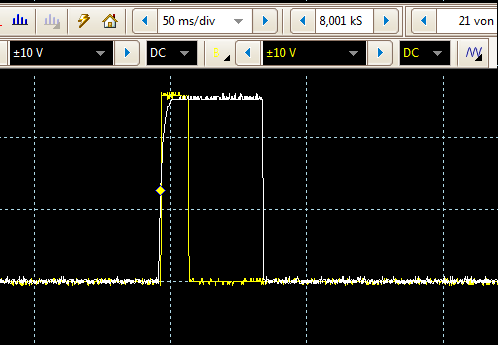Hello TI Forum,
I am trying to trigger the SN74LV123A on the rising and falling edge of the same signal.
For this I have shorted both inputs (inv&non-inv) of the same channel.
I works fine on ChA (white input to P1&P2), yellow = output P13)
As for Ch B it doesn´t trigger on the falling edge (white input to P9&P10), yellow = output P5)
Am I missing something ?
I tried swapping components, signal source (2 ch rotary encoder), different IC´s etc but nothing works.
Could it be the IC is not designed to work in this mode? Why would it work on Ch A but not Ch B?
Seriously considering two IC´s using Ch A on both but should be wasted PCB space etc...
I hope someone can help :)
Circuit is as follows:






